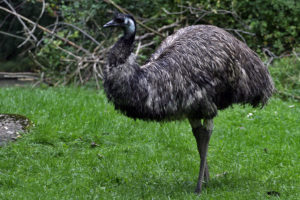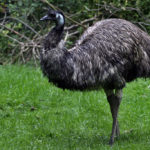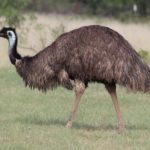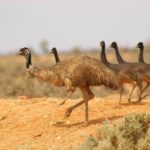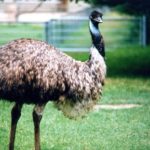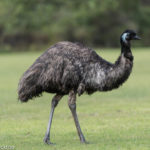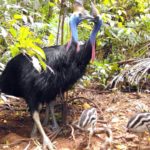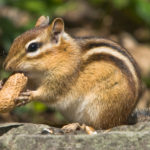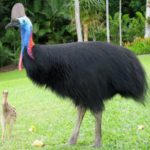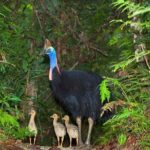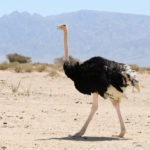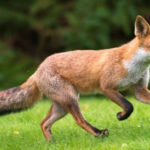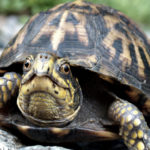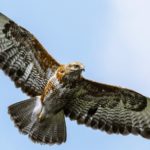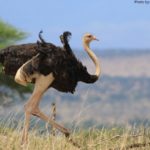Facts about emus
 Emu is a large running bird, inhabiting the territory of Australia, which can not fly. In size, it is second only to the ostrich.
Emu is a large running bird, inhabiting the territory of Australia, which can not fly. In size, it is second only to the ostrich.- The emus are very obedient and curious, and easily tamed in captivity.
- Male emu are called roosters, and female ones are called chicken.
- Emu prefers life in wooded areas, forest areas, fields and steppes with the exception of tropical rain forests.
- The emu grows up to 190cm in height and weighs up to 55kg, and the size of the male animals is slightly less than the female ones.
- Due to their strong muscular legs Emu runs at speeds up to 55 km / h, and the length of the legs allows the bird to make steps up to 275 cm.
- Each year, the emu ostrich travels for distances of thousands of miles, running daily for 25 km.
- The sounds produced by males are more like grunting, while the sounds of females are like loud “booms” and drumbeats.
- Water ostriches are needed daily. They use their lungs, like coolers, in hot weather. When it is cold, repeated bends of the nasal passages help the birds to process and humidify the air for its repeated use.
- Emu are quite resistant to temperature fluctuations and feel quite comfortable both at -5 and +45 degrees Celsius.
- The ostrich emu has a long neck, a sharp beak and small ears. His body is covered with light brown feathers.
- The emu has two pairs of eyelids – one for blinking, and the other for protection against dust ingress. Their long feet end with three fingers.
- Each ostrich feather has a double rod. When running, Emu hides her little wings under feathers and uses them as stabilizers.
- In the trachea emu is a bag that is used for communication.
- Emu are solitary birds, but they can be gathered in pairs or flocks. In flocks they gather exclusively in places with an abundance of food and only for food.
- Ewes emu swim perfectly. They can easily cross the river in search of food.
- However emu prefer to just play in the water, rolling off the shore on their backs and kicking the air with their feet on hot days.
- Emu eats flowers, berries, grain, as well as caterpillars, insects, their larvae, lizards and small rodents.
- These birds lay a large amount of subcutaneous fat, which is used for survival during the search for food.
- These birds do not have teeth, so they swallow a large pebble, with which they grind food in the stomach.
- Eggs emu can begin to multiply in 20 months.
- Emu creates couples in the summer, but mate in a cooler time of the year.
- “Marriage singing” emu can be heard at a distance of 2 km.
- Males build nests of bark, grass, branches and leaves, in a depression on the ground.
- Emu lay eggs about 9×13 cm in size and weighing up to 900 grams each.
- The weight of one put emu egg exceeds the weight of a hen’s egg by 12 times.
- Nests usually have 8 to 10 eggs, but this number may be twice as large.
- Male individuals incubate offspring for about 8 weeks, while females are busy laying eggs. The female lays an egg every 2-3 days.
